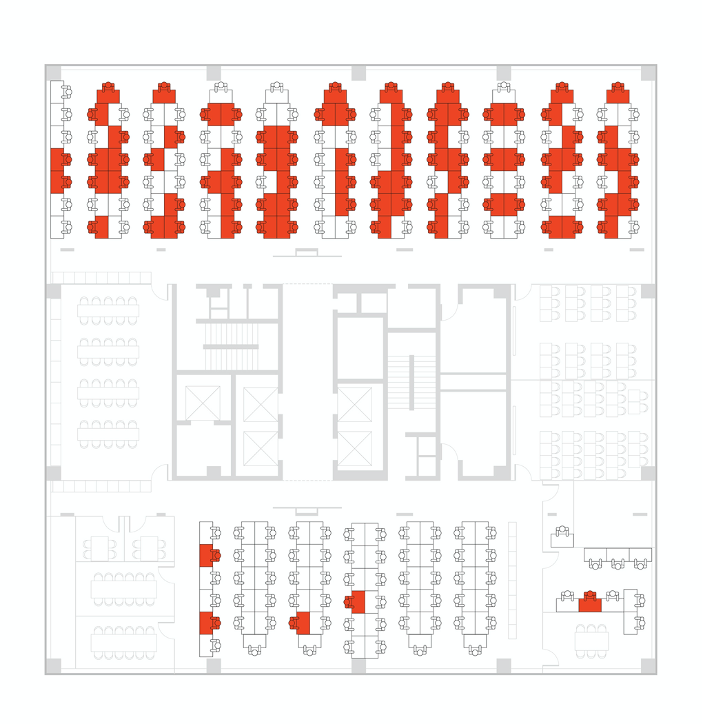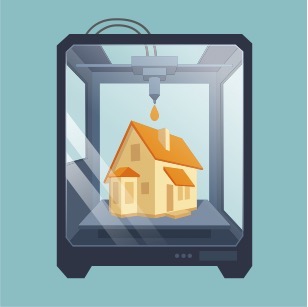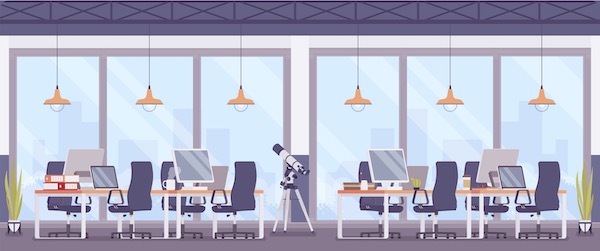The Economics of the Future Office
The modern office will get a makeover as more of the economy slowly heads back into the workplace:
Workstations should be modified to maintain six feet of separation. Shields or other physical barriers should be erected to separate employees and visitors where social distancing isn’t possible. Stagger shifts and offer incentives to employees to use forms of transportation that minimize contact with others.
Before entering the building, employees need to receive a temperature and symptom check. Employees should wear face coverings at all times.
Communal areas should be blocked off, and employees should be barred from using shared office appliances like coffee pots, water coolers, and bulk snacks.
The CDC recently issued these guidelines, among others, on the safest way for employers to reopen offices. Given current office configurations, many American companies realize that adhering to these recommendations would be impossible in some cases. Additional required capital investment and space constraints could cripple already tenuous operating budgets.
Humans crave social interaction, and employees see a return to the office as an opportunity to recapture that engagement. But, as companies react to these sweeping changes, many eye fundamental changes that will permanently alter how they conduct business.
The End of the Open Office Space
Even before the pandemic, the open office concept was under fire. Propagated in the 1980s, open offices were meant to reduce physical and psychological barriers between teams, promote transparency, and lower real estate costs through increased employee density. Instead, employees have complained the layout is intrusive, hampers productivity, and discourages interaction between employees. And now, in a post-pandemic world, crowded and open office space presents a health risk.
An infection map of a South Korean call center provides insight into just how hazardous these layouts can be. After one employee began exhibiting symptoms, rows of shared desks and cluttered workspaces provided the opportunity for unfettered transmission through the office. Within two weeks, 44% of the employees became infected, prompting the Korean government to shut the building down.
After one employee began exhibiting symptoms, rows of shared desks and cluttered workspaces provided the opportunity for unfettered transmission through the office. Within two weeks, 44% of the employees became infected, prompting the Korean government to shut the building down.
Quasi solutions like unidirectional walkways and incessant disinfecting have been offered, but tech companies like Facebook and Twitter are looking for long term solutions. Mark Zuckerberg believes that half of Facebook's employees will work remotely over the next 5-10 years. Jack Dorsey, CEO of Twitter, shared a similar vision, announcing his employees could work from home forever. At first glance, this sounds like a gimmick; when you factor that rent or mortgage payments are typically a business's second-largest expense behind salaries, it makes sense.
But how will these likely changes impact the market for traditional office buildings?
Unless you’re sitting on a considerable amount of dry powder, don’t expect a lender to underwrite a large office building over the next 12 months.
The more important question that the market needs to solve is what is so valuable about working in a shared physical space? If the goal is to foster collaboration and a community environment, advancements in virtual meeting technology and team management software have enabled organizations to do that remotely. If the goal is to ensure employees are working from 8-5, then your organization probably has other issues.
As the economy transitions out of the immediate health crisis, and companies begin to shape their long-term strategy, the demand for office space will be impacted considerably. The market has proven that most white-collar employees can effectively do the same work remotely. Instead of monthly rent expense on an antiquated office model, organizations could offer employees an allowance to improve work conditions at home.
The workforce was already yearning for an alternative to the outdated open-concept office space. Maybe the pandemic was the swift kick the market needed to revolutionize the modern-day workplace.



